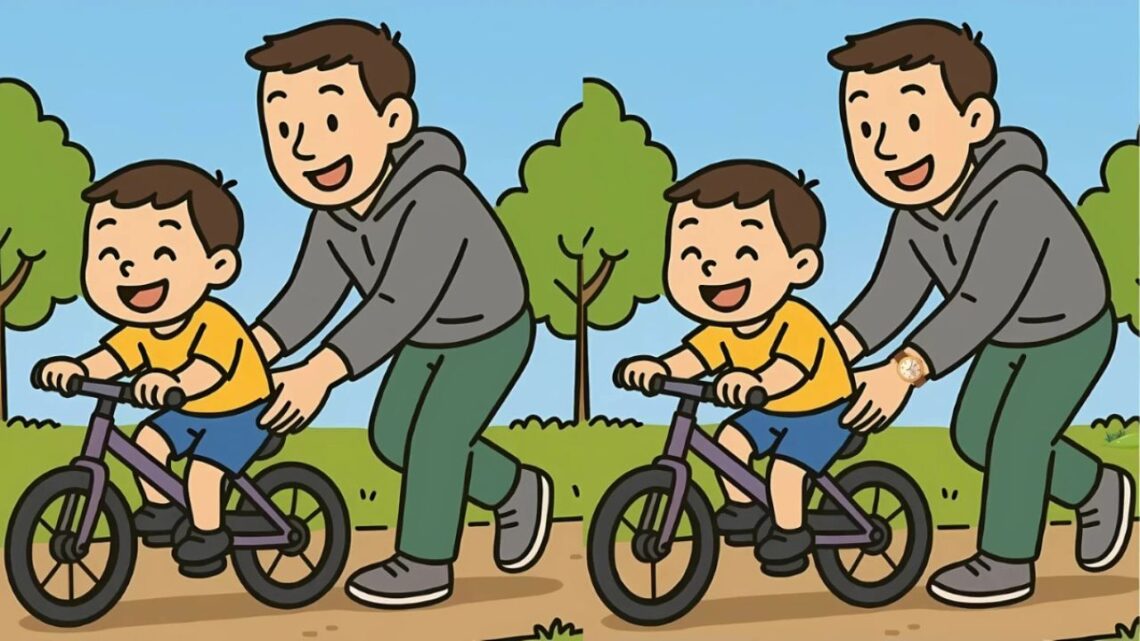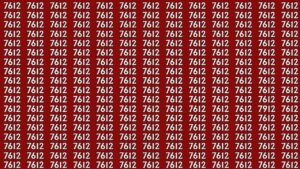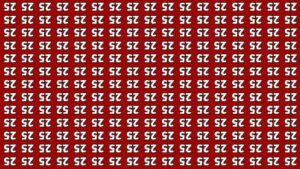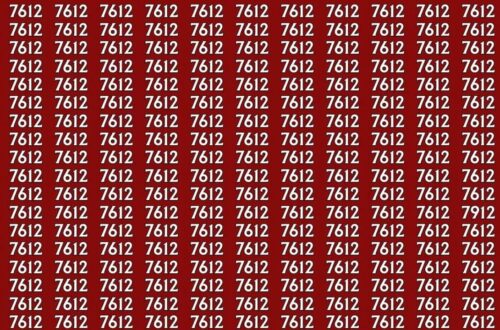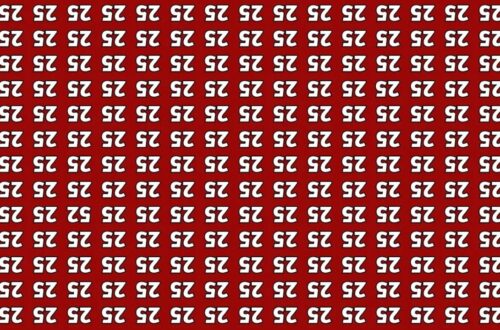This spot-the-difference test looks easy—two near-identical images of a father and son—but the 21-second timer raises the stakes.
Your eyes perform rapid jumps called saccades, typically 2–5 per second, which means you have roughly 42–105 fixations to scan both images before time runs out.
Efficiently spending those fixations is the key to success.
Another hurdle is change blindness: when scenes are highly similar, tiny tweaks in edges, shadows, or props often slip past even sharp observers.
How To Solve Faster (Step-By-Step)
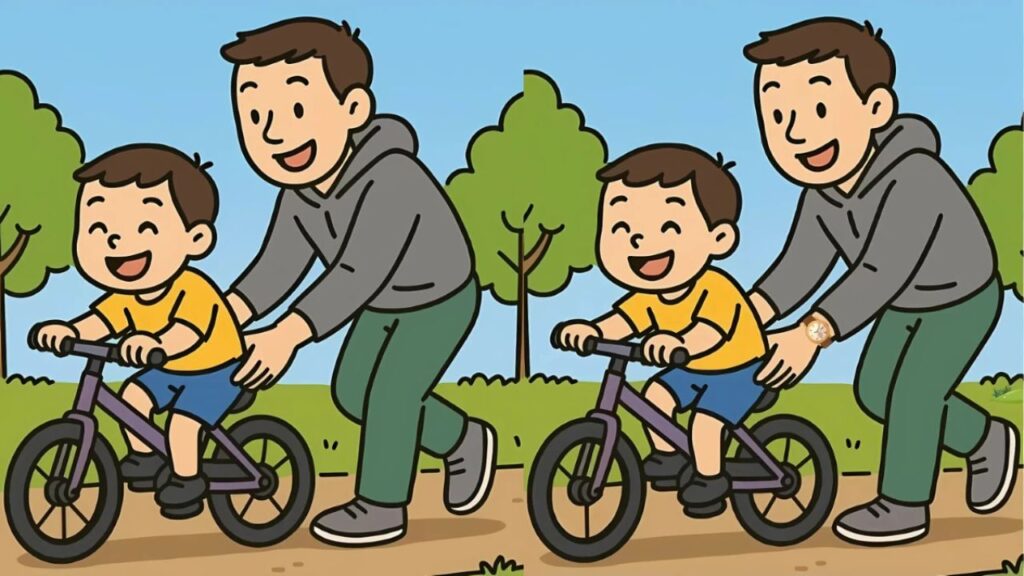
- Warm-Up Glance (2–3 Seconds): Do a quick, wide scan of both images to anchor major shapes—heads, shoulders, clothing edges, and background lines. This primes selective attention.
- Grid The Scene: Mentally split each image into a 3×3 grid. Compare cell-by-cell so you don’t re-scan the same area and waste fixations.
- Prioritize High-Change Zones: Faces, hands, collars, cuffs, pockets, hairlines, shoelaces, and repeating patterns (stripes, tiles) often hide micro-differences.
- Trace Edges: Run your gaze along contours (jawline, shirt outline, ear curves, object borders). Small shifts in edge geometry are easier to spot than color alone.
- Alternate Lock-Step: After checking a small feature in Image A, jump to the exact counterpart in Image B—this syncs your saccades and reduces misses.
- Manage The Clock: Aim for ~7 seconds per difference. If stuck, move on and return later—fresh attention often reveals what you missed.
- Final Zoom-Out (3–4 Seconds): Step back and check global structure: shadow direction, object spacing, horizon lines, and background alignment typical of father–son scenes (e.g., sleeve length, watch position, toy placement).
Quick Facts And Figures
| Item | Details |
|---|---|
| Time Limit | 21 seconds |
| Differences To Find | 3 |
| Typical Eye Jumps (Saccades) | 2–5 per second |
| Estimated Fixations Available | ~42–105 in 21 seconds |
| Primary Challenge | Change blindness in similar scenes |
| Core Skills Used | Selective attention and rapid visual search |
Why these matter: The saccade rate and fixation budget define your real time to compare features; change blindness explains the “they’re identical!” feeling when the difference is tiny.
Who Benefits From These Puzzles
Short, timed visual challenge can sharpen attention, visual working memory, and quick decision-making.
They’re great for students, gamers, designers, editors, or anyone who works with fine visual details.
Treat them as a useful workout to improve focus and precision—not a cure-all for brain fitness, but a practical daily drill.
Practice Tools You Can Try
To train beyond this 21-second sprint, use daily find-the-difference apps or browser games that offer:
- Timed modes to mirror the 3-difference target.
- Progressive difficulty so you build speed gradually.
- Streaks and milestones for consistent practice.
When practicing, keep your grid method, edge tracing, and final zoom-out as a fixed routine—consistency compounds speed.
The Can You Spot 3 Differences Between The Father And Son Pictures In Just 21 Seconds? challenge is a concentrated test of visual search, selective attention, and time management.
By structuring your scan (grid method), prioritizing high-change zones, tracing edges, and respecting your fixation budget, you can consistently beat the clock.
Treat each attempt as a quick, focused drill—small improvements add up fast, and soon you’ll spot those 3 differences with calm, repeatable precision.
Solution- Three Differences Revealed
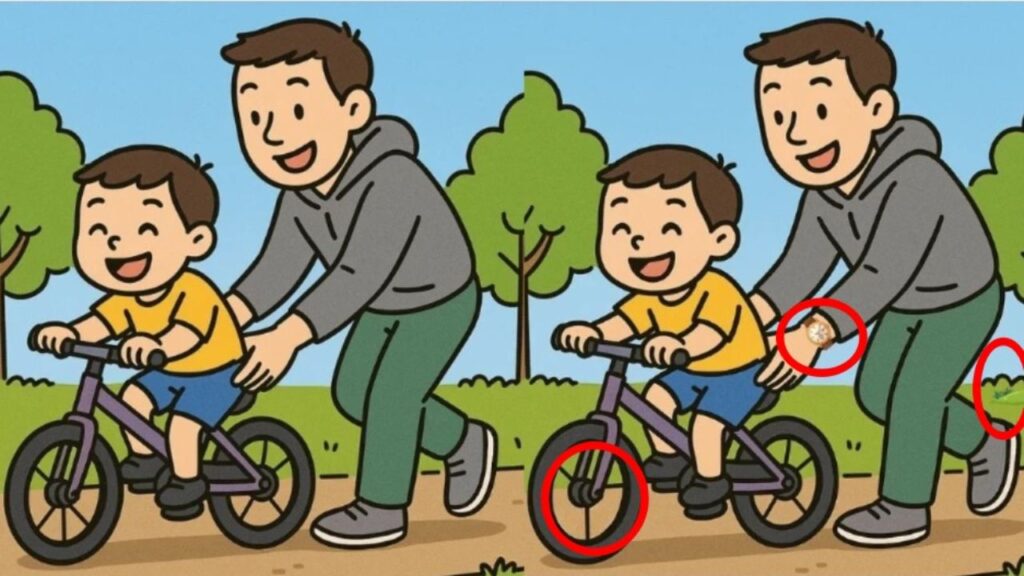
In the right image, the father now wears a wristwatch that isn’t in the left image, the boy’s bike front wheel shows a single vertical spoke/bar that’s missing on the left, and there’s an extra bush/grass clump near the father’s back foot that doesn’t appear in the left scene.
FAQs
Is 21 seconds enough time to find all 3 differences?
Yes—if you scan methodically. With 2–5 saccades per second, you get ~42–105 fixations to compare regions. A grid pass prevents wasted eye movements.
What kinds of differences are most common in father–son images?
Expect subtle shifts in collar angle, sleeve length, watch or bracelet position, hair parting, shadow edges, or small background objects (books, toys, frames).
How can I improve my speed for future challenges?
Do short daily sets of visual search puzzles, practice grid-based scanning, and finish with one zoom-out pass. Timed practice builds confidence and pace.

